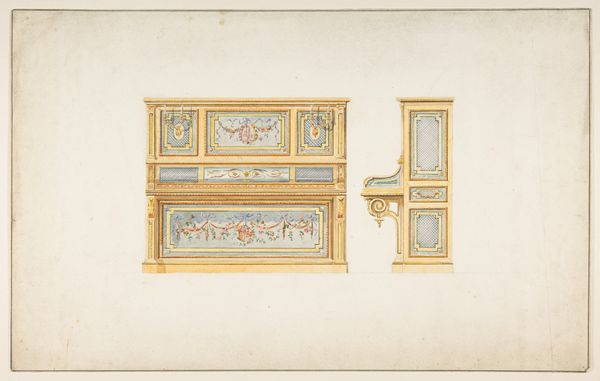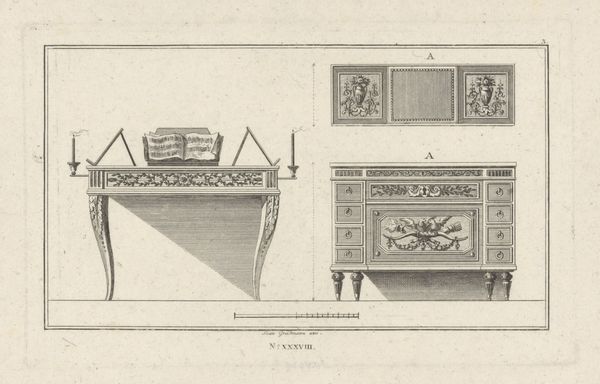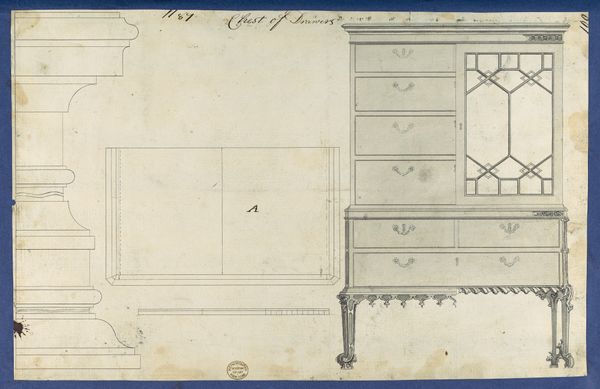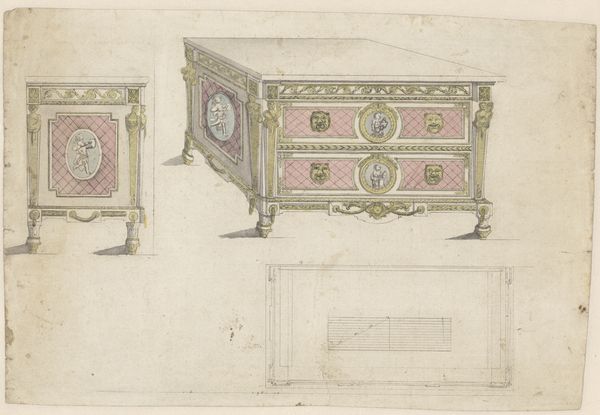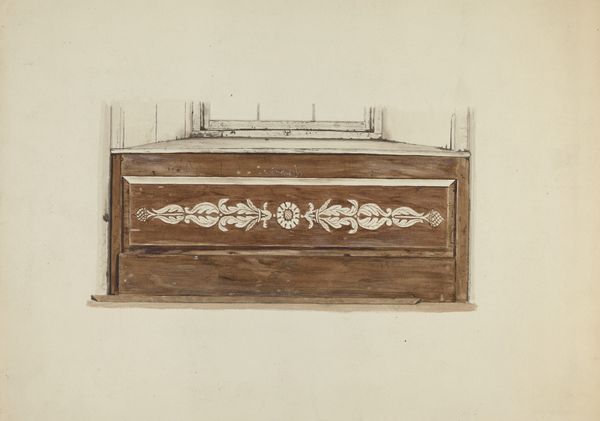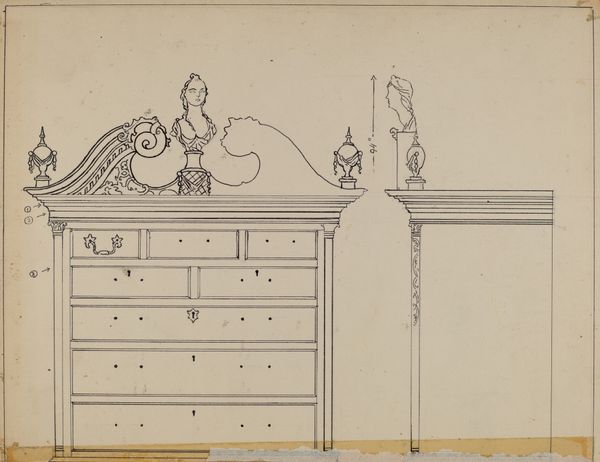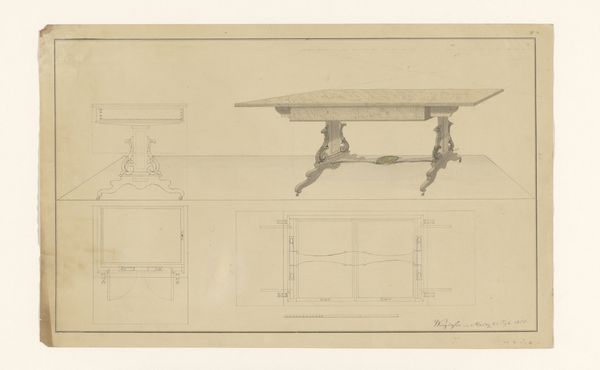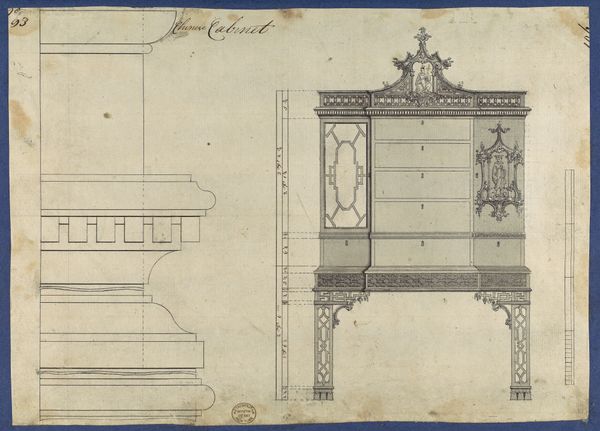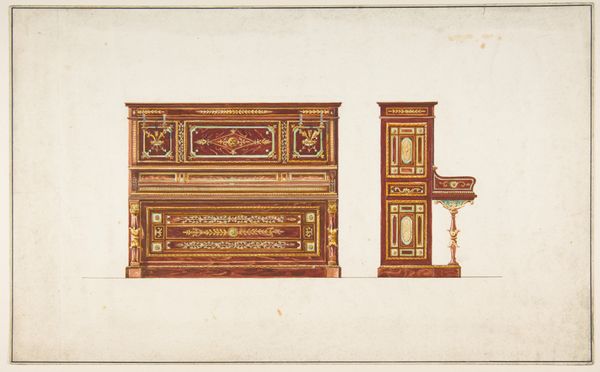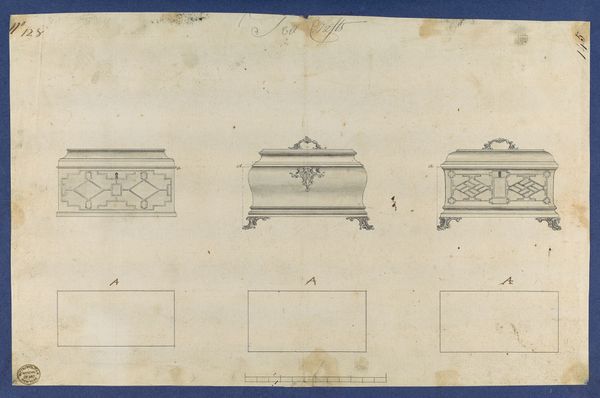
drawing, wood
#
drawing
#
form
#
geometric
#
line
#
wood
Dimensions: overall: 21.5 x 27.1 cm (8 7/16 x 10 11/16 in.) Original IAD Object: 47 3/4"long; 22"wide; 39 1/4"high
Copyright: National Gallery of Art: CC0 1.0
Curator: At first glance, there’s a wonderful intricacy to this plan. It has a rather austere and imposing feel to it, don't you think? Editor: It certainly does. What we're looking at here is a drawing by Nicholas Gorid, simply titled 'Chest,' from around 1936. The work itself is ink on paper, meticulously detailing a large wooden chest. Curator: Ah, a drawing of what *could* be a wooden chest. It brings up questions of craft and labor, and whose labor? Were these intricate designs meant for someone to produce this chest for their personal use, or even commissioned from a craftsperson? Editor: That's right. These workshop drawings represent the circulation of aesthetic and functional woodworking practices. We have to also remember the Depression era of the 1930s in the US. Such drawings can inform our view of what might have been, while they also bring up complex socioeconomic questions. This intersectionality helps contextualize the creation of such plans in the first place. Curator: Precisely. It suggests the desire to create functional objects rooted in older styles. And you can sense the push and pull between tradition and function, especially with geometric shapes dominating. Were these geometric patterns perceived as modern or old-fashioned at that time? Or both at once? Editor: It's very interesting. Woodworking and artisanal practices were also part of federal efforts during the Depression as part of the American art and crafts revival moment. Perhaps understanding where and for whom Gorid imagined this piece could offer new directions in interpreting this drawing. Curator: Fascinating to think about this plan of a chest as a historical marker as well as the start of a tangible item, that in the end may never come to fruition. Editor: Right. In some ways, the drawing itself embodies this historical tension. That makes it so much more complex than just the design for a simple chest.
Comments
No comments
Be the first to comment and join the conversation on the ultimate creative platform.

